On a recent trip down to Bryce Canyon National Park I spent some time photographing the sunset and sunrise from Bryce Point. While the sunset was fairly drab (as they often are at Bryce), the sunrise was spectacular. It started out with a bit of mulling around at the viewpoint amongst a crowd of tourists, jockeying for a spot to set down my tripod and compose a pleasing panorama. As the sun crept close to the horizon, yet still below, clouds to the east lit up with a deep red. Next the sky gradually brightened and the cliffs were illuminated by a soft, glowing ambient light that softened all of the shadows and began to reveal some color in the rock. As the sun rose further still it crested the horizon, and I snapped a quick sunburst image (I had only about a 15 second window). Rising further still, the sun became an overwhelming force in the east creating an unruly sunburst and flare, but the result was a deep orange glow on the cliffs of Bryce Canyon National Park. Here are the images from the sequence of lighting I just described:
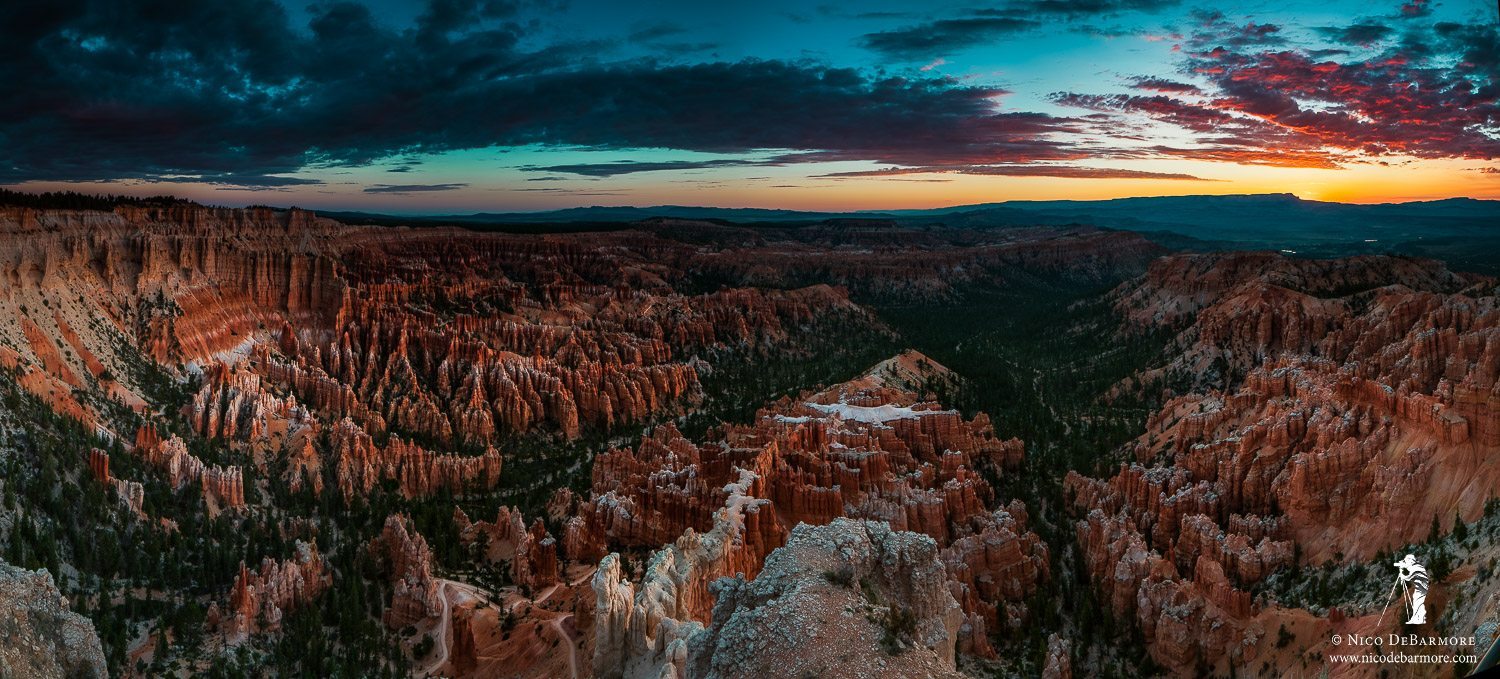
Bryce Canyon Red Clouds
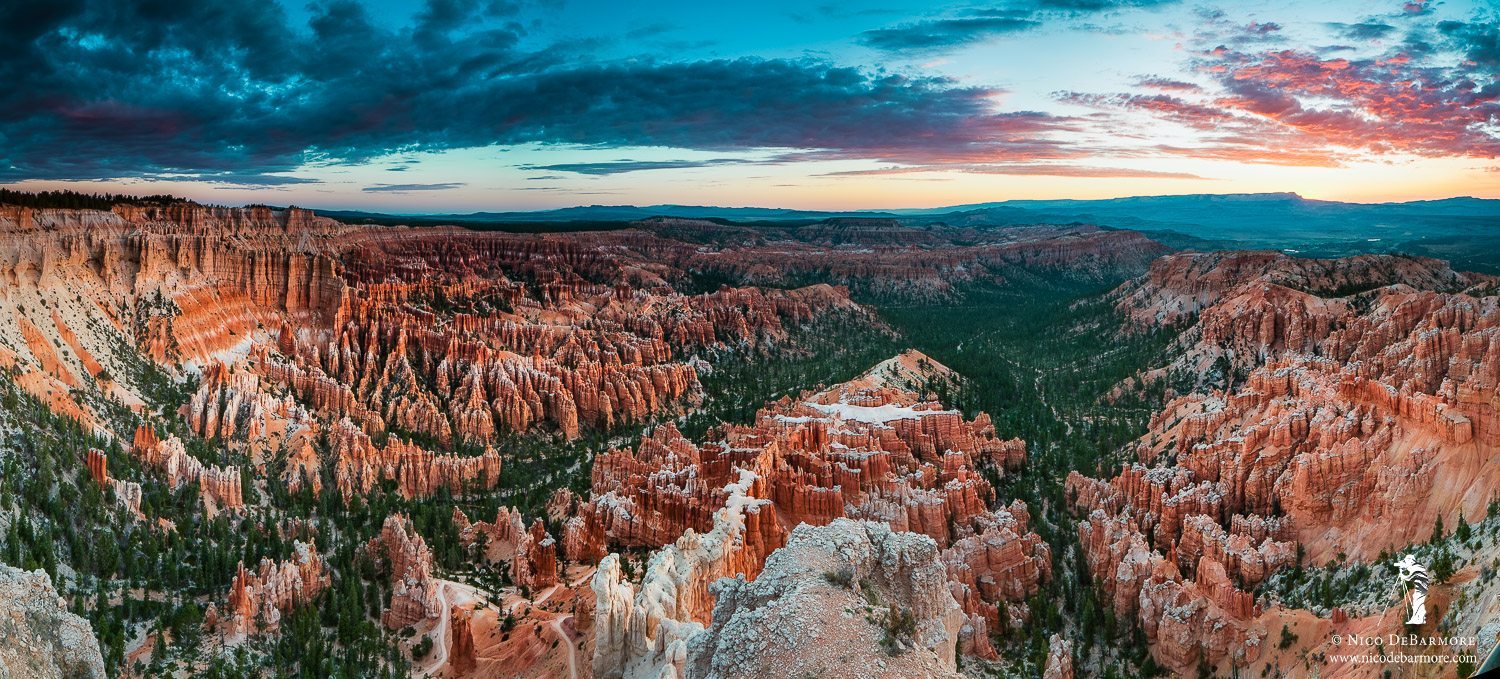
Bryce Canyon Morning Soft Light
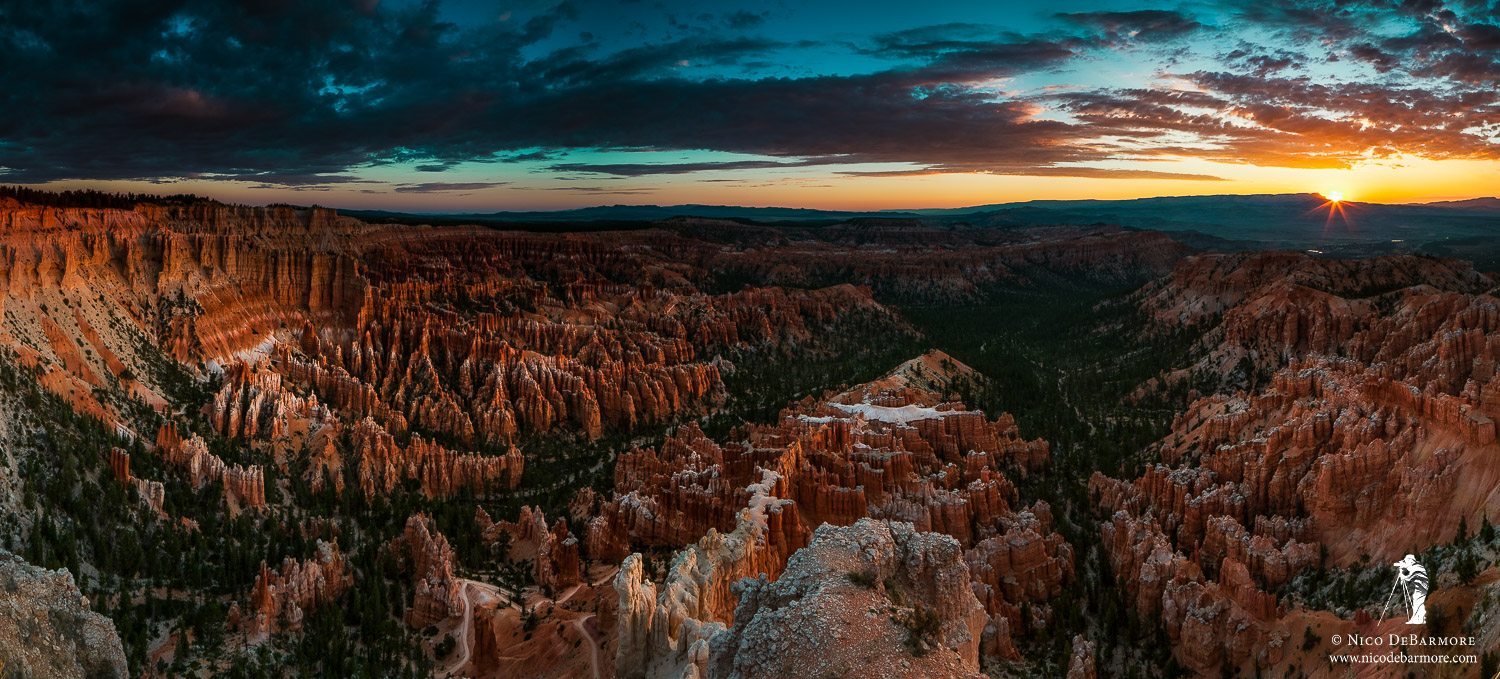
Bryce Canyon Morning Sunburst
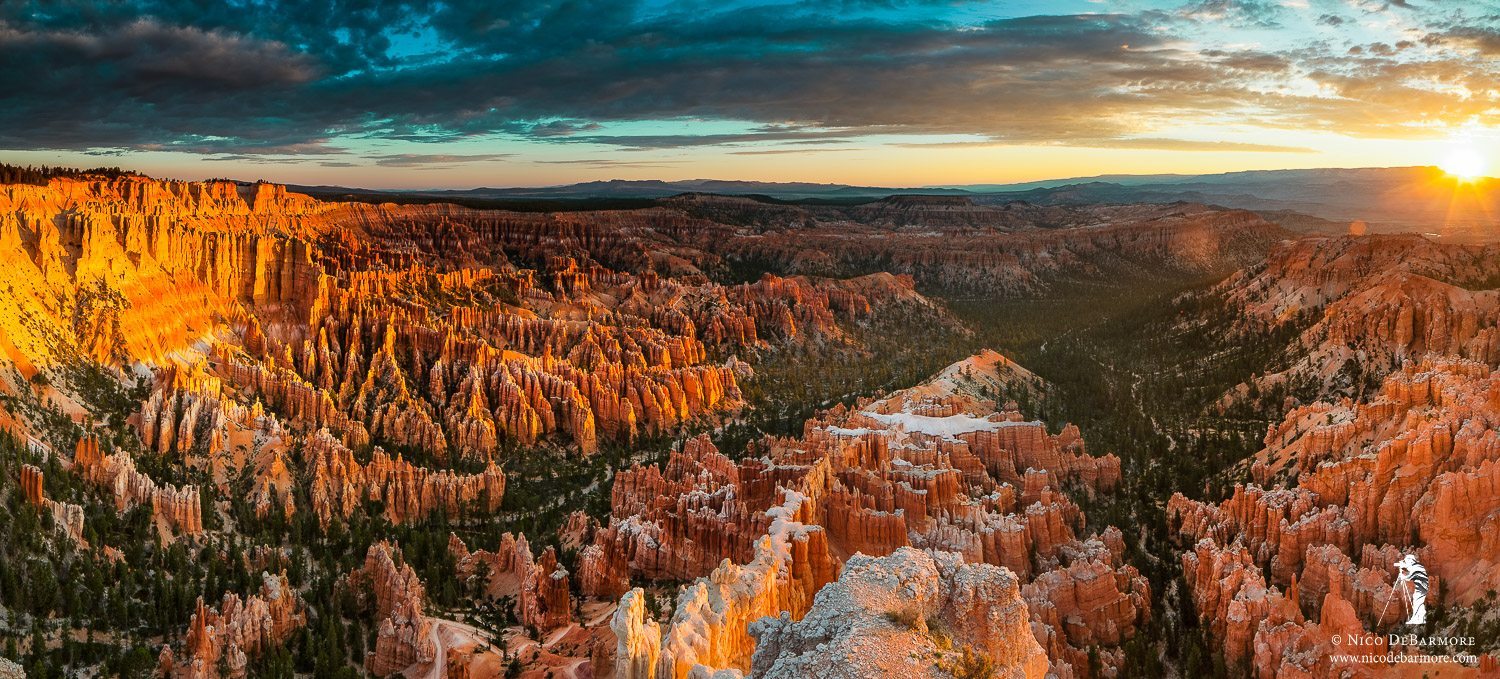
Bryce Canyon Orange Glow
All of this occurred between 6:39 AM and 6:49 AM – a span of ten minutes! I used my camera to capture each “stage” of the sunrise, yet individually these images don’t really tell the story of that morning. Sure, the red clouds are spectacular, but the rest of the canyon is left in darkness. The softly lit image has neither the contrast of the first image in the sky no the color of the subsequent images in the cliffs – it just provides a nice overall tone and illumination. The sunburst is cool, but the exposure for the sunburst requires a relatively dark image overall. Finally the illuminated cliffs of the final image (which look even better on my color calibrated monitor), really breathe life into the scene and make it pop, yet the color in the clouds is completely lost.
When I sat down at my computer I developed each exposure individually in Adobe Lightroom to bring out its best qualities, but something was lacking. Instead, I decided to see if I could combine them into a single image that would represent all the different facets of that sunrise that occurred within that ten minute span. I brought in the red clouds, the sunburst, the orange cliffs, and some of the soft shadow lighting and blended them seamlessly by hand in Adobe Photoshop to create what I believe best represents that sunrise in my mind.
This leads me to the title of the article – Digital Photography Ethics – I am interested in exploring the different viewpoints DP ethics and Photoshop. I see two different sides of an argument, and perhaps both are valid. I honestly can’t make up my mind!
The Purist
Often we approach photography with the attempt to record exactly what happened in nature, what happened in front of our eyes. The greats like Ansel Adams used previsualization and a mastery of the darkroom to create incredible prints. In this day and age we generally use Adobe Lightroom and Adobe Photoshop. The purist generally restrains edits to those that would have been possible in a traditional darkroom – adjusting contrast, tones, and color, but not altering the image in a dramatic way (removing power lines, for example). The idea behind the purist methodology is to capture as much as possible in the camera, and some professional photographers actually use the fact that they DON’T use Photoshop as a selling point. The idea is that the less digital technology that is used after the capture, the more “authentic” the image. The purest image would be one that goes straight from the camera to the printer, with all attempts made to perfect tone and color during the actual exposure of the scene.
The Digital Artist
The opposite camp of the purist would be the view that the camera is merely one of many tools used to create art. The photography print could be the end product, or perhaps even the photograph is part of a larger medium or process that results in something even more unique, like image transfer methods. This photographer will capture a scene with a knowledge of what will be possible later – the knowledge of how he can manipulate the image in Lightroom and especially in Photoshop informs his techniques in the field. The digital artist may aim to recreate what he sees before his eyes in the most exacting way possible – which could be to overcome the limitations of the modern digital camera by various advanced post-processing methods. Alternatively the artist could use some technique that creates something entirely different from the reality that was before the camera, like a double exposure photograph.
My Opinion
I’m torn. On one side, I have spent a great deal of time and effort to ensure that I can create the most accurate image at the time the exposure is captured. I use graduated neutral density filters, polarizers, and more because I would rather have one image that is great than several images that I have to combine on the computer to make a great image. No matter how hard I try to have a great image at time of exposure, there will always be “development” necessary in Adobe Lightroom because the file from the camera is a basic RAW file that needs to be “developed” just as a film camera produces a negative that must be interpreted by the printer.
On the other hand, sometimes my idea or interpretation of a scene might not be as it actually occurred. The image of a Bryce Canyon Sunrise that I’m using for this post is a perfect example. Different light occurred at different times within a span of ten minutes that dramatically changes the scene. I saw all of this happen but at the end of it all my memory of the scene is what you see above – a combination of the red light on the clouds, the sunburst, the canyon light, and the orange cliffs. None of these occurred simultaneously but in my head this is the image I see.
What Do YOU Think?
I am curious what other folks think about this, be you an amateur photographer, a professional photographer, or not a photographer at all. Should photographers absolutely minimize their use of Adobe Photoshop? Where do we draw the line? Stitching panoramas? Focus stacking? Exposure blending and HDR? Are all of these techniques simply processes to yield a final outcome that is simply “art” for which the process is irrelevant? Is there a difference between combining images of the same scene versus swapping a sky in from a completely different image? I suppose the essence of this entire discussion would be this: When making a photograph, does the process of creation matter, or is that irrelevant in regards to the final product?

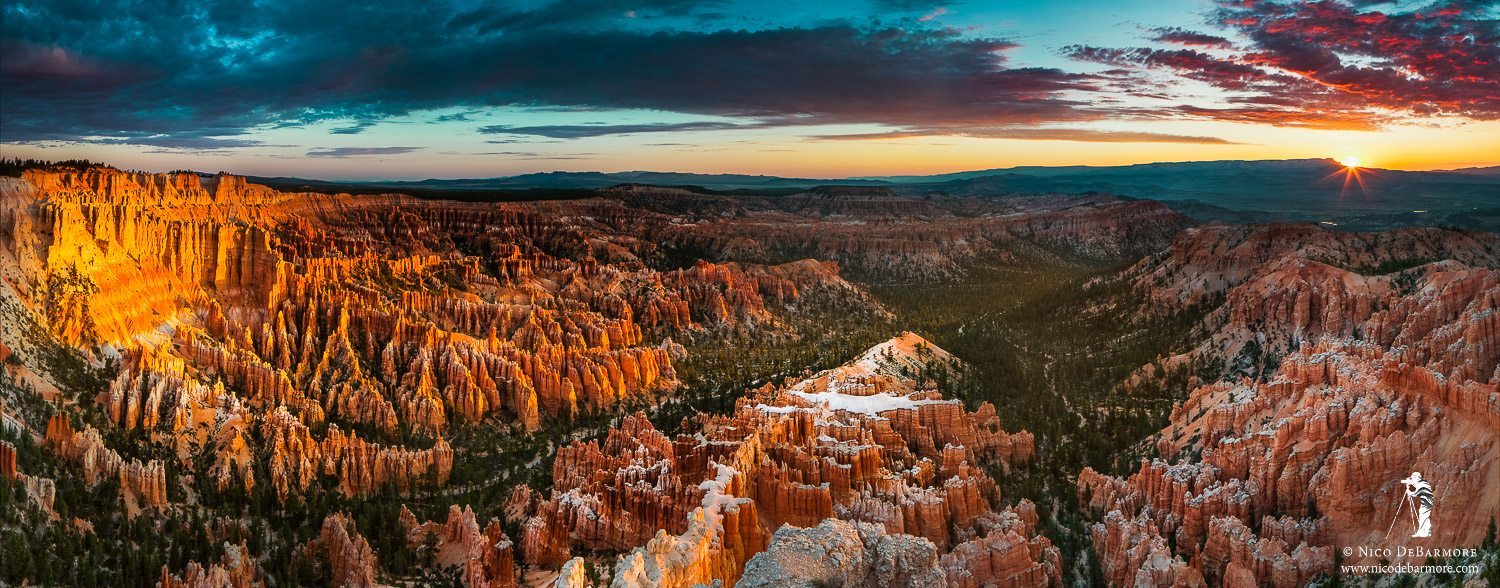
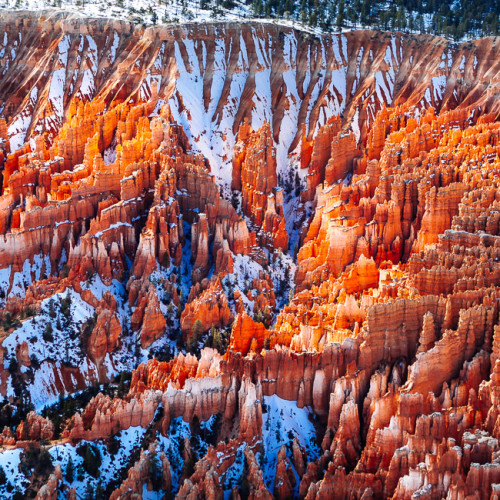
Leave a reply